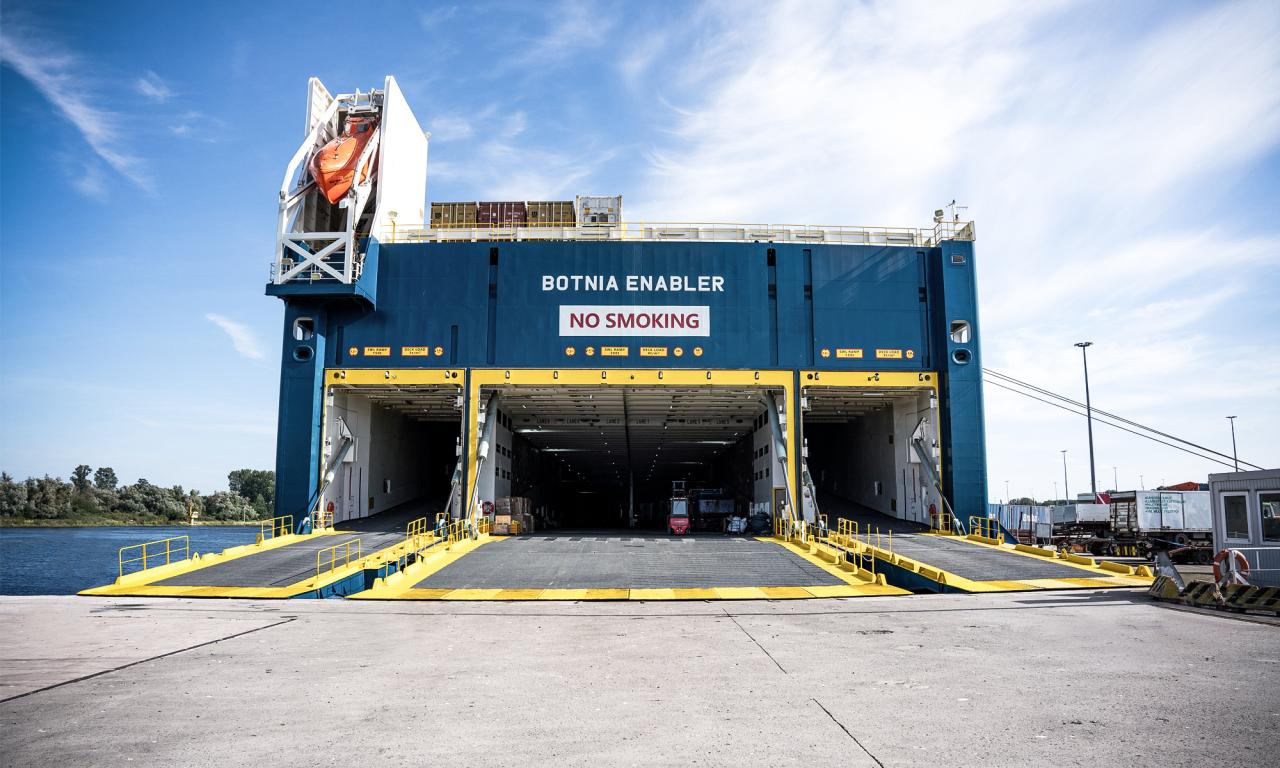Breaking the ice

The extreme winter conditions in the Bay of Bothnia are grueling for ships in traffic. The new WALLENIUS SOL vessels, however, are designated with the highest possible ice class to keep the regular schedule going all year round. The secret? Powerful engines and reinforced hulls, along with a number of other smart solutions.
To be allowed to traffic the Bay of Bothnia during the harsh winter months, ships have to be designated with an ice class issued by Finnish and Swedish authorities. WALLENIUS SOL’s two sister ships, Botnia Enabler and Baltic Enabler, have been designed to achieve the highest ice class, 1A Super: capable of operating in extremely difficult conditions, including navigating ice a meter thick or more.

Tough conditions
The ice is almost alive in this part of the world, with winds pushing it around and building it up into large ridges. But we can operate all through the winter season, even during the worst ice period. This means that we’ll be able to serve our clients all year round. Even during peak ice season in the shift from March to April, when conditions were really tough, we were underway almost constantly,” says Tobias Persson, Captain, Botnia Enabler.
“This is the first winter we are testing the ships in real life. The test models made us hopeful that the ships would have excellent performance in ice conditions, and I’m happy to say that it turned out to be true. Performance has actually been even better than expected. This is a whole new generation of much larger vessels. Our beam is about 10 meters wider than the previous largest vessels in winter traffic in the area, and we are also much wider than most icebreakers. There’s been a lot of pressure on the hull, but we have just kept on going,” says Tobias Persson.
Icebreaker support
Even though the Enabler ships can handle tough ice conditions, all ships in the Bay of Bothnia get icebreaker assistance during winter.
“The icebreakers are there to keep the lanes open for all ships, and to assist stuck vessels. We are grateful for their support, and they remove some of the resistance. Otherwise we would consume more fuel, which is bad for the environment, and we would go slower, which is bad for our clients. So the icebreakers definitely serve a purpose,” says Tobias Persson.

Smart design choices
The hull shape is designed to perform well in tough ice conditions, and the ship can operate in temperatures down to minus 35 degrees Celsius. Botnia Enabler och Baltic Enabler are using a system to prevent ice from blocking the seawater intake valves, letting ice accumulate without disrupting the flow. The hull, propellers and rudders are reinforced, and the ships are equipped with ice radar to help avoid the thickest ice.
“We have a lot of hull reinforcements, several meters above and below the water line, with extra frames and thick plating,” says Johan Boman, Chief Engineer, Botnia Enabler.
Even though the ice landscape has looked tough, we’ve gone through it like a knife through butter”
Powerful engines
“We also We also have two very powerful engines, one for each reinforced propeller. The ice class rules for this vessel would require us to have an engine with a power of approximately 13,500 kilowatts. We have a little bit more than that: two engines with 9,900 kilowatts each, with the option to supply each shaft with another 1,000 kilowatts Power Take In from the auxiliary engines. So we can generate a maximum of 21,800 kilowatts. That extra power is needed when conditions get really tough,” says Johan Boman.
The two propellers make the ship more maneuverable; also, as an extra benefit, by reversing one engine the propellers can help to flush out ice alongside the quay in port.
“The engines have performed very well this ice season, and we haven’t had any problems. Even though the ice landscape has looked tough, we’ve gone through it like a knife through butter,” says Johan Boman.



